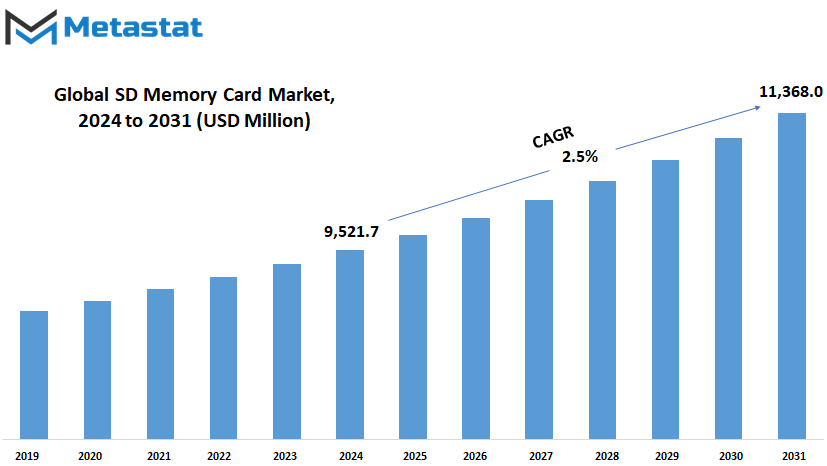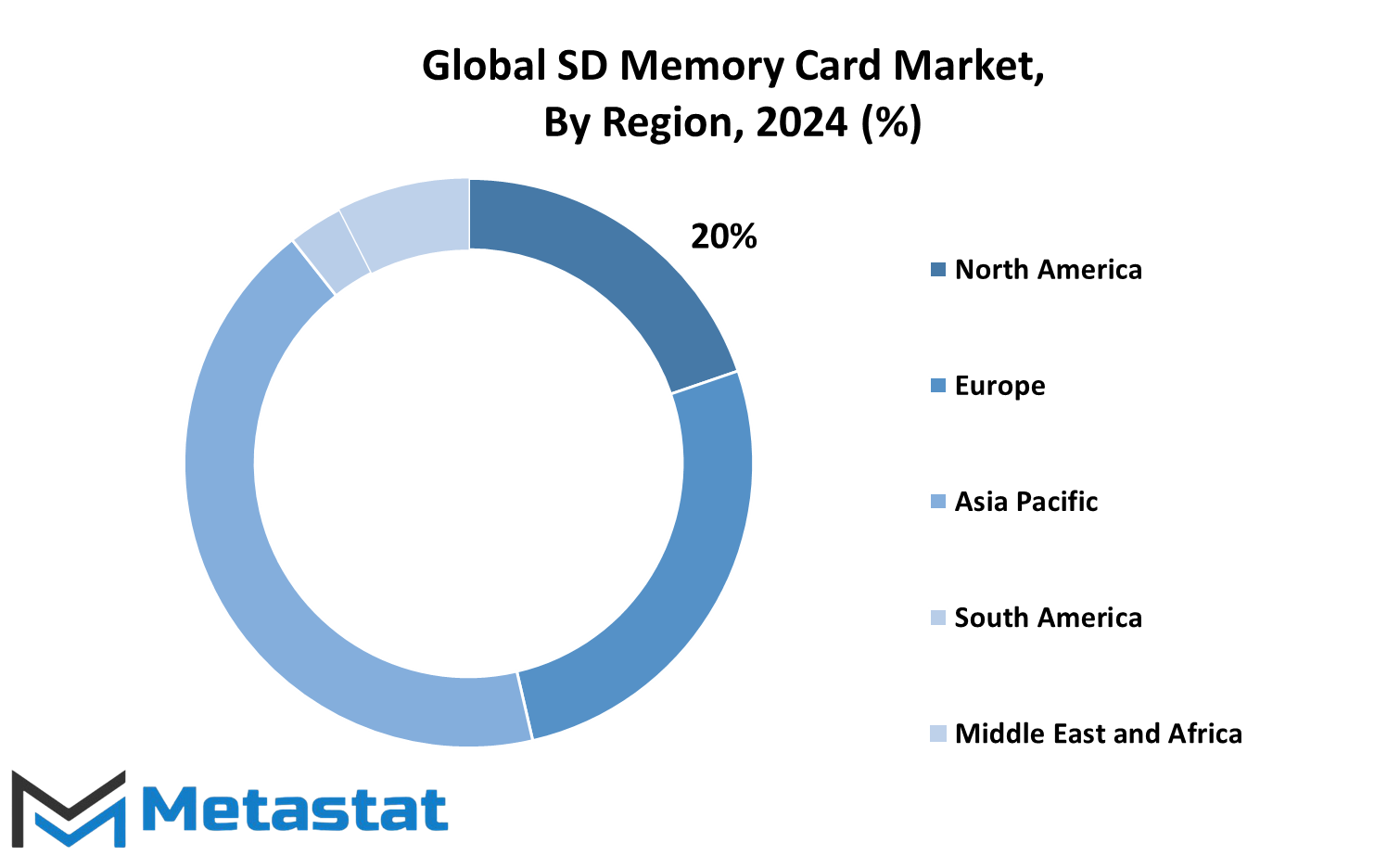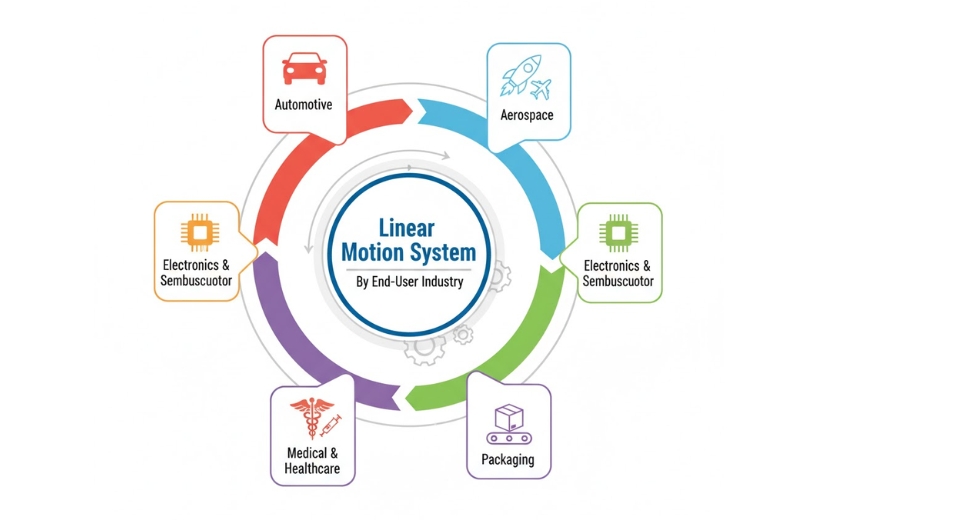MARKET OVERVIEW
The Global SD Memory Card market reflects one of the vibrant sectors of the technology and consumer electronics industries, that produces, develops, and markets Secure Digital (SD) memory cards. In various applications like digital cameras, smartphones, tablets, gaming consoles, as well as numerous industrial and medical devices, these miniaturized portable storage products play critical roles. As consumer and professional reliance on portable data storage grows, further transformation can be expected from the SD memory card industry, adapting to advancements in digital ecosystems as well as rising data demands.
SD memory cards come in many different categories: based on storage capacity, speed classes, and form factors. Most of these variations have distinctive differences; for example, standard SD, miniSD, and microSD cards are meant to cater to various user demands, from basic data transfer to high-definition video recording and intensive industrial applications. The market also accommodates an array of performance standards including SDHC, SDXC, and UHS protocols which allow users to meet different demands in data storage and transfer.
The Global SD Memory Card market would witness increased development with the continuous innovation process in the field of digital technologies. Increased storage, faster transferring speed, will be all consumer expectations going forward. When technology takes a deeper penetration in the form of 4K and 8K video recording, artificial intelligence integration in devices and Augmented reality among others then there would be demand for highly capacitated large capacity and high-speed-enabled SD Memory cards. Manufacturers will focus on the performance and durability of SD cards, incorporating advanced materials and robust designs to appeal to consumer and industrial markets.
The market's scope extends beyond consumer electronics. Industrial applications of SD cards are expanding, with sectors such as healthcare, automotive, and aerospace relying on these devices for data logging, monitoring systems, and navigation. In parallel, the gaming industry, fueled by developments in portable consoles and virtual reality, continues to push for advancements in SD card technology to support seamless gameplay experiences and extended storage options.
Regional markets will form a significant part of the Global SD Memory Card market, as the Asia-Pacific region has turned out to be the key contributor, with the largest manufacturing capacity and consumers in the region. North America and Europe will continue to play a major role, mainly because of technological advancement and consistent consumer demand. Penetration of connected devices in developing regions is expected to provide growth opportunities in the coming future, thereby encouraging more investment and collaborations.
The shift to sustainable technology and energy-efficient production processes will shape the future of the industry. Moving forward, manufacturers are bound to follow greener techniques of production and recyclable materials, responding to a mix of regulatory pressures and consumer expectations about the global environment. All these initiatives would redefine the competitive strategies of the market and foster innovative product designs for sustainability.
The Global SD Memory Card market, therefore, is poised as the cornerstone of modern data storage technology. The flexibility of evolving with technology advancement and adapting to applications provides a sense of relevancy in this fast-digitizing world. As industries and consumers alike continue to seek efficient, portable storage solutions, this market will remain at the forefront of technological advancement and innovation.
Global SD Memory Card market is estimated to reach $11,368.0 Million by 2031; growing at a CAGR of 2.5% from 2024 to 2031.

GROWTH FACTORS
The Global SD Memory Card market is dynamic. Technological advancements and rapidly changing user needs influence this market. Highly substantial portable data storage solutions remain pivotal, as the world generates and consumes increasingly high-resolution digital content. Increasing dependence upon mobile devices for work, entertainment, and communication has made SD cards indispensable for smooth storage and access. These small yet highly efficient devices allow users to expand their device storage without relying on permanent hardware upgrades, which makes them a practical and cost-effective choice for many.
Furthermore, the applications of SD cards are broadening beyond consumer electronics into other industries. For example, in the automotive sector, these cards are used for data logging, navigation systems, and infotainment storage. Similarly, SD cards are increasingly used in surveillance systems in applications where reliable and efficient storage is needed for the high-definition video recording. IoT has further increased market due to the need of compact, secure, and fast storage solutions for the transfer and storage of data for smart devices.
However, these growth factors have challenges for the market that may affect its movement. Cloud storage solutions, which provide virtual data storage without any physical constraints, are a serious threat to SD card adoption. Most consumers and businesses are switching to cloud-based storage because it is easy to access from multiple devices. Another issue is the compatibility of devices. The different types of cards, including SD, microSD, and SDXC, can be frustrating for users when their devices do not support a particular format. These hurdles may slow the market's growth if not adequately addressed.
The future, however, for SD cards looks promising. Edge computing is an emerging technology, which processes data closer to where it is being generated; therefore, there is a need for localized storage options like SD cards. Drones and AI-driven devices, often requiring compact and high-capacity storage, further open up the market. The more innovative the technology, the more likely that SD cards will come out with better speed, capacity, and durability, satisfying the needs of these modern applications.
The Global SD Memory Card market is expected to witness some new avenues of growth as the years unfold because technology and applications continue their quest for growth. Grooming the key problems on compatibility and competitiveness posed by cloud solutions would also pave the way forward to continued momentum in this very fluid market.
MARKET SEGMENTATION
By Card Type
The Global SD Memory Card market is likely to undergo massive growth due to ongoing improvements in digital technology. Memory cards are an indispensable feature in portable devices like smartphones, cameras, and other portable gadgets that offer a quick and efficient way to store data. Among the types available, SD cards cater to diverse requirements, offering options such as Standard Capacity (SD), High Capacity (SDHC), and Extended Capacity (SDXC). These variations accommodate a broad spectrum of applications, from basic use to professional-grade storage needs.
The microSD card segment, valued at about 7,946.4 million USD in 2020, is notable for its compact size and compatibility with most modern devices. The popularity of this segment lies in its seamless integration with smartphones, drones, and gaming consoles. It is continuously evolving, with newer versions providing higher capacities and faster data transfer rates to meet the increasing demand for smoother performance and enhanced storage in high-definition content, augmented reality, and virtual reality applications.
As technology advances, so do CompactFlash Cards and MultiMediaCard MMC, though still relevant though they cater to niche applications. CompactFlash Cards is mainly preferred by professional photographers and users who have to frequently do high-speed burst photography operations because of its rugged strength. MMC cards are known more for their ease of use or cost-effectiveness and are preferred in specific applications related to the industrial and legacy fields.
Future innovations in the Global SD Memory Card market will therefore be directed at increasing density while reducing the physical size of the storage, as portability and efficiency requirements are growing. Enhanced features of durability, including water resistance and temperature tolerance, will also become more pronounced as people seek reliable storage solutions both for personal and professional use. This could include better connectivity options on the SD card, that would seamlessly integrate with other systems, taking advantage of cloud computing and edge devices.
Another thing that should influence the market is sustainability. With growing demands for ecological sustainability worldwide, manufacturers would look to utilize environmentally friendly materials and production processes to make products without loss in performance. As these changes occur, the Global SD Memory Card market will continue to evolve and provide innovative solutions for both current and emerging needs. By staying in tune with technological trends and consumer preferences, the market is sure to play a critical role in the ongoing transformation of digital data management.
By Storage Capacity
The Global SD Memory Card market is growing steadily, and this is due to technological advancement and changes in consumer demands. These small but vital devices have become an integral part of data storage solutions, offering convenience and portability. The market is segmented by storage capacities, catering to different needs. From small capacities of up to 4GB to more than 512GB, SD memory cards meet different needs-from simple storage for casual users to professional-level options for professionals requiring high-speed data transfers and higher storage volumes. With the advancement of the digital world, demand for greater storage capacities is likely to grow.
It has been driven by smartphones, cameras, and other smart devices, and therefore the requirement of proper storage solutions has emerged. Consumers today demand cards which do not only store considerable data but also guarantee security and quick access. Under this perspective, SD memory cards that range between 32GB to 128GB are preferred by most of the consumers who balance price with performance. High definition video recording, gaming, and professional photography are just some of the applications that most often use these cards. For the high-end types, these cards range from 128GB to 512GB, while the ones above 512GB will reach an even more specific crowd of filmmakers, data analysts, and users who usually handle big files.
4K and 8K video recording is already trending. This will be coupled with improvement in gaming consoles that will require bigger capacity cards for all their demands. With artificial intelligence and machine learning applications that also rely heavily on vast data processing and storage, it is likely to find more users in emerging industries of the future with these bigger capacity cards. However, the development of the SD memory card market does not solely rely on increasing capacity. Innovations in data transfer speed and compact design durability play a part. Manufacturers will bring out faster read and write cards, keeping up with demands that are real-time.
Waterproofing, shock resistance, and other durable design features have become expected, as well, by those who need equipment that will last for years without losing a step. Looking forward, the Global SD Memory Card market is likely to continue its expansion. Increased adoption of smart technologies, including IoT devices and augmented reality applications, will drive manufacturers to innovate further. With these developments, SD memory cards will remain a cornerstone of data storage solutions, evolving to meet the dynamic needs of future generations while maintaining their indispensable role in digital ecosystems.
By Speed Class
The Global SD Memory Card market is likely to grow steadily in the future with advancements in technology and growing demands of consumers and industries. Compact storage solutions are essential in this era, where data generation and storage continue to rise. Casual smartphone users, professional photographers, and videographers all require SD cards, ensuring their relevance will not be reduced.
The market is divided into various speed classes, which serve specific user needs. Class 2, Class 4, Class 6, and Class 10 cards have long been standard because they are cheap and easily accessible. They satisfy the demands of everyday tasks like storing photos, videos, and applications. However, the usage of UHS-I and even UHS-II cards is growing with demands for higher speeds for data transfers and more performance. UHS-I cards with options like U1 and U3 can offer faster read and write speeds compared with other non-UHS categories, making them quite suitable for recording high-definition videos or quickly transferring large files. Ultra-high-speed performance UHS-II cards, in particular are best suited for professionals working on 4K and even 8K content, where quick storage solutions, which do not let them down, are a must.
Another major innovation in the Global SD Memory Card market is the Video Speed Class. V6, V10, V30, V60, and V90 cards are part of this category, designed especially for high-resolution video recording. With an increasing trend of immersive content such as 360-degree videos, virtual reality, and cinematic-quality films, they have become inevitable. Huge data streams are handled at incredible speeds without any hitch, ensuring smooth recording times for creators.
Going forward, the market will continue to innovate: the proliferation of Internet of Things products, along with rising uses of drones for both recreational and commercial purposes, will be among the drives keeping that future bright. Smart devices are becoming very popular, making more complex and efficient memory solutions needed for the evolution of SD cards. Cloud-based technologies can be used together with physical storage solutions, supplementing their application rather than replacing them wholesale. As technology continues to advance, the Global SD Memory Card market will always be the bedrock of data storage, acclimating to new challenges and opportunities with better performance and versatility.
By End-User
The Global SD Memory Card market has demonstrated much growth, inspired by the diverse requirements in all sectors and the populace. SD memory cards, with their versatility and portable feature, are becoming increasingly indispensable in current storage technology. With diverse capabilities, these mini-size products can be accessed from consumers to commercial or industrial applications up to government users to some professional industries such as mass media and entertainment. The changing needs of these groups remain to be a drive in the development of SD memory card technology.
SD memory cards are a necessity to many consumers for storing pictures, videos, and files on a smartphone, camera, or a laptop. As personal data usage increases, the need to have more storage capacity as well as faster data transfer rates continues to grow. Consumers are seeking a solid solution for their digital storage needs, and thus the SD memory card has emerged as an indispensable accessory to daily life.
Commercial and industrial users prefer SD memory cards due to their versatility and reliability. These cards support data-intensive operations in logistics, healthcare, and automation. They ensure that the workflow remains efficient while maintaining secure storage. Industrial-grade SD memory cards, for instance, designed to withstand extreme environmental conditions, are of great importance in industries where reliability and performance cannot be compromised. Such cards can withstand extreme conditions and are, therefore, a favorite for industries requiring dependable storage solutions.
Governments and military use the SD memory cards for applications requiring high security. In such fields, security is paramount, and what is needed is storage that provides advanced encryption capability and gives robust performance. The cards play a great role in managing sensitive information, from classified information to real-time communications. When it comes to compact size and portability, they offer convenience without losing functionality, especially in critical situations.
SD memory cards in the media and entertainment industry are in demand for high-capacity storage, which is essential for capturing and storing high-definition content. Professionals in photography, videography, and production require these cards to ensure they have enough space for large files while maintaining quick data transfer speeds. With the push toward 4K and 8K video formats, SD memory cards will evolve further to accommodate larger file sizes and faster processing requirements.
The Global SD Memory Card market is likely to continue expanding going forward as technology develops and consumers become more sophisticated in their demands. Whether through higher capacity, faster speeds, or specialized features, SD memory cards will continue to be used as integral components of supporting digital storage across a myriad of applications.
|
Forecast Period |
2024-2031 |
|
Market Size in 2024 |
$9,521.7 million |
|
Market Size by 2031 |
$11,368.0 Million |
|
Growth Rate from 2024 to 2031 |
2.5% |
|
Base Year |
2022 |
|
Regions Covered |
North America, Europe, Asia-Pacific Green, South America, Middle East & Africa |
REGIONAL ANALYSIS
The Global SD Memory Card market is characterized by different factors that are widely disparate across different regions. Every region is uniquely represented within the market, portraying the unique technological development, economic structure, and consumers. This regional analysis shall shed light on the trends and developments that make the use and growth of SD memory cards around the world.
North America is dominated by the powerhouses of technology sectors in both the United States and Canada. As those nations are innovators with broad adoption of consumer electronics, this drives the demand for SD memory cards through photography, gaming, and data storage industries, among others, due to increased adoption of advanced digital devices. Mexico, with its growing electronics manufacturing industry, also contributes to the market dynamics in this region, ensuring steady demand for storage solutions.
Europe is characterized by considerable growth, and it is led by the UK, Germany, and France. The high penetration of smartphones and professional photography development have resulted in a continuous demand for SD memory cards in this region. The presence of a strong industrial base for Germany makes it focus more on the reliability of storage for manufacturing and design. Rising interest in high-capacity cards is seen by the UK and France for their creative professionals. All the remaining markets in Europe remain constant with steady contributions coming through various consumer and industrial applications.
Asia-Pacific presents the most dynamic region of interest with China, Japan, and South Korea leading in the technology developed and produced. Critical to the dominance of electronics manufacturing are China and Japan, a country known for precision engineering. South Korea's tech industry is also a growing force in innovation in the SD memory card technology arena. India has significant potential since its digital transformation is now gaining momentum, thus placing increasing demands on affordable and high-performance storage solutions. The remainder of the Asia-Pacific region reflects the ongoing but slow shift toward more digitized economies, further expanding the market.
South America, led by Brazil and Argentina, contributes to the market through a mix of consumer-driven and industrial applications. Growing smartphone adoption and digital media consumption are key drivers, supported by improving technological infrastructure. The Middle East & Africa also shows promise, with South Africa and the GCC countries being key markets, as the increasing use of electronics and improvements in IT infrastructure are driving SD memory card adoption.
As the Global SD Memory Card market is evolving, regional variations underlie its diverse growth trajectory, thereby suggesting a future where storage solutions adapt to meet the unique needs of different parts of the world.

COMPETITIVE PLAYERS
The Global SD Memory Card market is a dynamic and competitive landscape that is being shaped by several key players. Among them are some of the most prominent names, including SanDisk (Western Digital Corporation), Kingston Technology Corporation, and Samsung Electronics Co., Ltd. These companies play a very crucial role in innovation and meeting the increasing demand for high-performance memory solutions. With advancing technology and the increasing need for reliable data storage, these organizations continue to evolve their strategies in response to changing consumer and business needs.
The competition between the industry leaders is characterized by the development of product capabilities that include greater storage capacity, higher read and write speeds, and robust durability. Companies such as Transcend Information, Inc., and Toshiba Corporation are especially notable for their pursuit of catering to a broad range of applications, from consumer electronics to professional-grade devices. Lexar (Longsys), Sony Corporation, and ADATA Technology Co., Ltd. are equally notable for the innovative features that come with a digital-first world, such as improved energy efficiency and compatibility with emerging devices.
As technology advances, memory cards adapted for particular uses are in great demand-industries like photography, gaming, and IoT devices. Companies such as Delkin Devices, Inc. and Angelbird Technologies GmbH are especially manufacturing goods within niches that require customized solutions. Verbatim, Patriot Memory, Integral Memory Plc, and PNY Technologies Inc. brands are using their technical knowledge to provide quality storage while maintaining cost-effectiveness; this has made high quality more reachable for many people.
Further future enhancements in the integration of both hardware and software are in the horizon of the Global SD Memory Card market. In these new trends like 8K video recording and proliferation of smart devices, these companies would also come under a lot of pressure to innovate further. As the cards are being required increasingly with security features protecting the data, an area of development where contributions from the Micron Technology, Inc. would be significant.
This competitive environment makes collaboration between technology providers and end-users more important. Staying responsive to market needs while leveraging cutting-edge technology, these key players are poised not only to maintain their positions but also to set new benchmarks for performance and reliability in the years ahead.
SD Memory Card Market Key Segments:
By Card Type
- SD Card (Standard Capacity)
- SDHC Card (High Capacity)
- SDXC Card (Extended Capacity)
- microSD Card
- CompactFlash Card
- MultiMediaCard (MMC)
By Storage Capacity
- Up to 4GB
- 4GB - 32GB
- 32GB - 128GB
- 128GB - 512GB
- Above 512GB
By Speed Class
- Standard Class (Class 2, Class 4, Class 6, Class 10)
- UHS-I (U1, U3)
- UHS-II (Ultra High Speed)
- Video Speed Class (V6, V10, V30, V60, V90)
By End-User
- Individual Consumers
- Commercial and Industrial End-Users
- Government and Military (for specific high-security applications)
- Media and Entertainment Industry (for high-capacity storage needs)
Key Global SD Memory Card Industry Players
- SanDisk (Western Digital Corporation)
- Kingston Technology Corporation
- Transcend Information, Inc.
- Samsung Electronics Co., Ltd.
- Toshiba Corporation
- Lexar (Longsys)
- Sony Corporation
- ADATA Technology Co., Ltd.
- PNY Technologies Inc.
- Delkin Devices, Inc.
- Verbatim
- Patriot Memory
- Integral Memory Plc
- Angelbird Technologies GmbH
- Micron Technology, Inc.
WHAT REPORT PROVIDES
- Full in-depth analysis of the parent Industry
- Important changes in market and its dynamics
- Segmentation details of the market
- Former, on-going, and projected market analysis in terms of volume and value
- Assessment of niche industry developments
- Market share analysis
- Key strategies of major players
- Emerging segments and regional growth potential







 US: +1 3023308252
US: +1 3023308252






